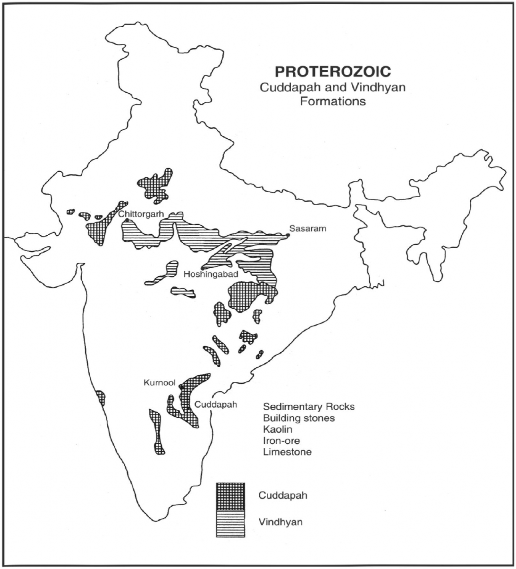THE CUDDAPAH SYSTEM (THE PURANA GROUP)
The Cuddapah system is made of shales, slates, limestone and quartzite. The rocks are generally without fossils. The Cuddapah formations, named after the district of Cuddapah in Andhra Pradesh, are sedimentary-metamorphic formations. The Cuddapah System occurs in the (i) Cuddapah and Kurnool districts of Andhra Pradesh, (ii) Chhattisgarh, (iii) Rajasthan-Delhi to the south of Alwar, and (iv) the Lesser Himalayas in the extra-Peninsular region. (Fig. L4)
At places the Cuddapah formations are six thousand metres in thickness. The enormous thickness of these rocks indicates the sinking of beds of the basin with growing sedimentation.

Fig. 1.4 Proterozoic Formations (2500-570 Million years)
The principle rocks of the Cuddapah System are sandstones, shales, limestone, quartzites slates, inferior quality of iron-ore, manganese ore, asbestos, copper, nickel, cobalt (Delhi System), marble, jasper, building material and stones for interior decoration. The metallic contents in the ores of Cuddapah rocks are, however, low and at places uneconomical for extraction.
